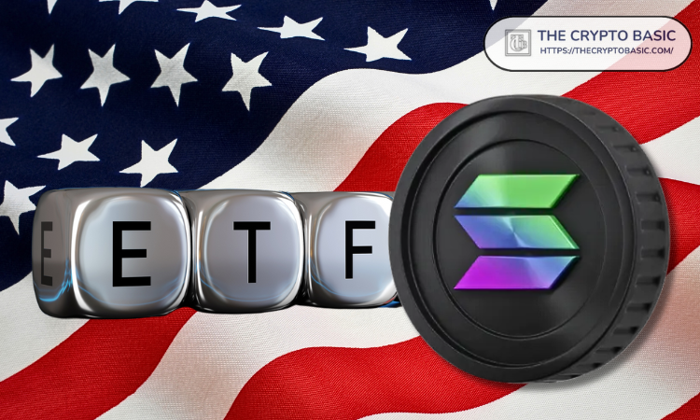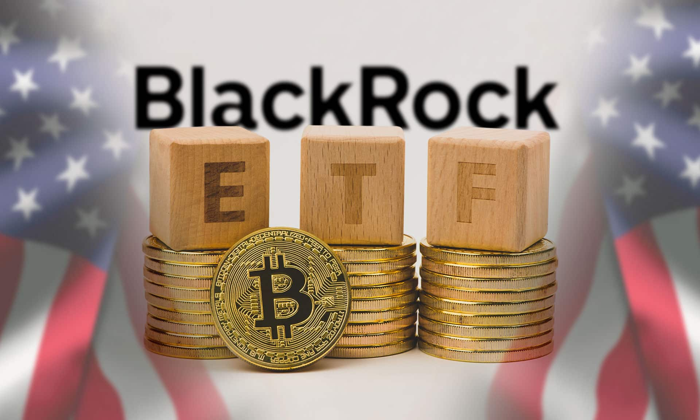Non-Custodial Staking has emerged as a pivotal aspect of the cryptocurrency landscape, particularly as the SEC evaluates its regulatory stance on staking practices. This method allows users to stake their digital assets without relinquishing control, making it distinct from traditional custodial options. As stakeholders like Everstake engage with regulatory bodies, the conversation around SEC staking regulations continues to evolve, highlighting the growing importance of clarity in the crypto staking framework. With over $193 billion in digital assets actively staked, this burgeoning segment of blockchain staking demands precise definitions to ensure compliance and foster innovation. Advocates argue that by recognizing non-custodial staking as a technical process rather than a securities transaction, we can preserve the decentralized ethos that underpins these digital assets.
When we talk about decentralized asset verification mechanisms, non-custodial staking often comes into play as a crucial approach that allows users to keep their tokens while still participating in network validation. In discussions about SEC regulations concerning crypto staking, it is important to clarify that this model does not resemble traditional investment contracts, thereby creating a distinction in regulatory considerations. Rather than pooling assets, non-custodial mechanisms emphasize user control and algorithm-driven reward distribution. As stakeholders like Everstake voice their perspectives in meetings with the SEC, it becomes evident that there’s a significant push for recognition of this method as a legitimate participation tool in the blockchain ecosystem. This renewed focus on regulatory guidance reflects the ongoing tension between innovation in digital finance and the need for compliant operational frameworks.
Understanding Non-Custodial Staking in the Context of SEC Regulations
Non-custodial staking has rapidly emerged as a pivotal aspect of the cryptocurrency landscape, allowing users to participate in blockchain networks’ proof-of-stake systems while maintaining control over their assets. Unlike custodial staking, where a third-party service manages the assets, non-custodial staking empowers the user, emphasizing autonomy and security. Everstake, a leading provider in this field, recently made a compelling case to the SEC’s Crypto Task Force that non-custodial staking should distinctly not be classified as a securities transaction, reinforcing the notion that this form of participation does not imply financial contribution towards a common enterprise.
In the framework of SEC staking regulations, Everstake argues that non-custodial staking operates more like a technical protocol than an investment vehicle. This perspective aligns with the technical nature of blockchain operations, where validators maintain network integrity without the necessity for centralized control. By asserting that users retain ownership of their digital assets, Everstake not only protects user rights but also emphasizes that staking rewards are derived from network participation rather than managerial efforts. Thus, the legal interpretation of non-custodial staking emerges as a crucial topic in discussions about the future of blockchain regulation.
The Challenge of Classifying Crypto Staking Under Existing Securities Law
Staking remains an intricate issue within the realm of U.S. securities law, partly due to the lack of clear definitions and guidelines from regulatory bodies like the SEC. Historical precedents from past SEC actions against major players in the staking ecosystem highlight the complexities involved and the agency’s hesitancy to provide unequivocal regulatory clarity. Everstake’s advocacy for non-custodial staking reflects a broader call from industry stakeholders for the SEC to delineate what constitutes a security versus a technical protocol.
The primary challenge arises from the Howey Test, a legal framework used by the SEC to determine whether an asset is a security. Everstake posits that non-custodial staking does not meet the criteria set forth by this test, as users do not pool their funds expecting profits managed by a third party. Instead, they participate on a decentralized network, receiving rewards that fluctuate based on network activity rather than managerial performance. This interpretation is critical for shaping the regulatory environment surrounding blockchain assets, and it emphasizes the urgent need for the SEC to address these nuances in order to foster innovation within the sector.
Everstake’s Meeting With the SEC: Key Outcomes and Future Directions
The meeting between Everstake and the SEC’s Crypto Task Force signifies a crucial step toward regulatory dialogue within the cryptocurrency space. Holding discussions with a significant player in the non-custodial staking market, the SEC acknowledges the need to understand the technical aspects of blockchain operations better. Everstake’s representatives articulated the importance of recognizing non-custodial staking as a distinct practice, arguing that it should be viewed independently from traditional securities offerings.
As regulators engage with industry leaders, the potential outcomes of such meetings could lay the groundwork for more comprehensive legal frameworks that support innovation while ensuring user protection. Everstake’s initiative to seek clarity from the SEC regarding both non-custodial and custodial staking models highlights the industry’s readiness for structured guidance that allows companies to thrive in an increasingly complex regulatory landscape.
The Implications of Non-Custodial Staking for Digital Asset Ownership
The concept of non-custodial staking shifts the paradigm of asset ownership within the digital ecosystem. By allowing users to stake their assets while retaining full control, non-custodial models significantly alter the relationship between users and staking providers. Everstake’s assertion that this process doesn’t constitute a transfer of ownership is vital, as it ensures users are not at risk of losing their assets to centralized entities. This model enhances user confidence in participating in blockchain networks, knowing they maintain control throughout the staking process.
Furthermore, the preservation of asset ownership aligns with the decentralized ethos of cryptocurrency. Non-custodial staking opens avenues for greater participation in digital asset ecosystems while minimizing risks associated with custodial services. Ensuring that users understand their rights and the implications of staking models is essential as the industry continues to evolve and mature, especially amidst the ongoing discussions with regulatory bodies.
Regulatory Clarity for Non-Custodial Staking and Its Effects on Innovation
As discussions continue between Everstake and the SEC, the potential for regulatory clarity surrounding non-custodial staking could have profound implications for innovation in the cryptocurrency sector. With nearly $193 billion staked across various blockchain networks, the significance of clearly defined regulations cannot be overstated. The absence of clarity can lead to reduced participation and investment in blockchain technologies, stifling growth and innovation. Everstake’s plea for a distinct classification of non-custodial staking is a vital part of this dialogue, seeking to unlock new opportunities for developers and users alike.
Moreover, achieving regulatory clarity could stimulate new developments in digital assets and decentralized finance (DeFi). As companies like Everstake step forward to engage with regulators, the outcomes of these discussions may serve as benchmarks for future compliance and technological advancement. By addressing the nuances of non-custodial staking, the SEC can assist in fostering a regulatory environment conducive to innovation while also protecting investors in the rapidly evolving digital asset landscape.
The Role of Industry Advocates in Shaping SEC Staking Regulations
Industry advocates play a critical role in shaping the regulatory landscape for SEC staking regulations. Organizations like the Crypto Council for Innovation are key players, representing a coalition of voices aiming to unify stakeholder interests and provide valuable insights to regulatory agencies. Their collective efforts underscore the importance of industry involvement in developing frameworks that not only promote innovation but also ensure consumer protections in the cryptocurrency space.
These communications are vital for building a constructive relationship between regulators and stakeholders. The organized push for clearer guidance on non-custodial staking illustrates how industry advocates can effectively influence regulatory processes and shape how digital assets are treated under the law. This collaborative approach may lead to more favorable conditions for growth, enabling stakeholders to navigate the emerging regulatory landscape with greater confidence.
How Non-Custodial Staking Models Ensure Security and Control for Users
Non-custodial staking models provide a unique blend of security and user control, setting them apart from traditional custodial methods. By allowing users to stake their tokens directly while maintaining ownership, these models reduce the risks associated with third-party asset management. Everstake, for example, emphasizes that there is no handover of assets, which preserves the integrity of user assets against potential mismanagement or loss.
The technical infrastructure provided by non-custodial staking services enhances security protocols expected in the blockchain environment. Users are self-governing their stakes while benefiting from the rewards generated by blockchain operations. This decentralized approach fosters trust among participants in the network, further encouraging wider adoption of staking as a sustainable layer of digital asset investing.
The Future of Blockchain Staking in Light of SEC Guidance
The future of blockchain staking largely hinges on the SEC’s forthcoming guidance regarding the classification of staking activities. As the regulatory landscape continues to evolve, the interactions between industry leaders like Everstake and the SEC will inform the development of clearer definitions that distinguish between custodial and non-custodial staking models. The outcomes of these dialogues may set essential precedents for how staking operations are treated under U.S. securities law.
This regulatory clarity is crucial for the thriving ecosystem of blockchain technology to flourish without fear of legal repercussions. By refining the regulatory framework, the SEC can provide the roadmap necessary for businesses to innovate confidently within the staking space, ultimately fostering healthy market growth and increased investor participation in decentralized networks.
Frequently Asked Questions
What is Non-Custodial Staking and how does it differ from custodial staking?
Non-Custodial Staking allows users to retain full control over their digital assets while participating in staking. Unlike custodial staking, where assets are managed by a third party, non-custodial staking keeps ownership in the hands of the user, making it a technical process rather than a securities transaction.
How does the SEC view Non-Custodial Staking in relation to staking regulations?
The SEC currently views non-custodial staking as a legal gray area. Everstake argues that non-custodial staking should not be classified as a securities transaction since users maintain control of their digital assets, unlike assets typically pooled in investment contracts.
What are the potential legal implications of Non-Custodial Staking under SEC regulations?
Non-Custodial Staking may face regulatory scrutiny under SEC regulations, especially regarding whether it fits the definition of securities. However, proponents like Everstake argue that due to the lack of asset transfer and the nature of rewards coming from network incentives, it does not meet the criteria for a security.
What evidence does Everstake provide to support Non-Custodial Staking as a non-security?
Everstake contends that non-custodial staking does not fulfill the Howey test, which determines if an arrangement qualifies as an investment contract. They emphasize that users do not invest in a common enterprise nor expect profits dependent on any managerial efforts, asserting the purely technical nature of their services.
How does Non-Custodial Staking affect the decentralization of blockchain networks?
Non-Custodial Staking supports decentralization by preventing a central authority from controlling user assets. This model enables users to validate transactions and earn rewards while remaining in control of their digital assets, fostering a more democratic and secure blockchain environment.
What criteria might exempt Non-Custodial Staking from SEC regulations?
Everstake proposed criteria for exempting non-custodial staking from securities classification, including the user’s control over assets, no pooling of funds, permissionless unstaking, and providing only technical services, which all reinforce the non-investment nature of the staking process.
Are there any recent developments regarding Non-Custodial Staking regulations in the US?
Recent discussions between Everstake and the SEC highlight ongoing efforts to clarify regulations surrounding Non-Custodial Staking. While the SEC has not provided definitive guidance, it’s actively engaging with various stakeholders to gather input on non-custodial and custodial staking practices.
What role do organizations like Everstake play in shaping Non-Custodial Staking regulations?
Organizations like Everstake advocate for clearer regulatory frameworks through direct engagement with the SEC, providing insights on the technical distinctions of Non-Custodial Staking that differentiate it from investment products and lobbying for rules that support innovation in the blockchain space.
| Key Point | Details |
|---|---|
| Non-Custodial Staking Definition | Non-custodial staking is a process where users maintain control of their digital assets without transferring ownership to a third party. |
| Everstake’s Argument | Everstake asserts that non-custodial staking is a technical function, not a securities transaction. Users simply delegate validation rights while keeping ownership of their tokens. |
| SEC’s Involvement | The SEC has opened discussions regarding staking regulations amid arguments from Everstake and other industry stakeholders. |
| Legal Gray Area | Despite the significant amount of assets staked, the legality of staking in the US remains uncertain as regulators define its classification. |
| Howey Test Criteria | Everstake claims that non-custodial staking does not meet the Howey test conditions and should be exempt from being classified as a security. |
Summary
Non-Custodial Staking has emerged as a topic of significant discussion among stakeholders in the cryptocurrency industry, particularly as the SEC weighs its regulatory stance on blockchain services. Everstake strongly advocates for the classification of non-custodial staking as a technical process rather than a securities transaction, emphasizing user control over digital assets and the absence of third-party involvement. As regulators continue to engage with the industry, clarity and definitions surrounding non-custodial staking will be crucial for fostering innovation while adhering to legal frameworks.
Non-Custodial Staking has emerged as a pivotal element in the evolving landscape of crypto staking, giving users a powerful way to earn rewards without relinquishing control of their digital assets. As the US Securities and Exchange Commission (SEC) deliberates on staking regulations, discussions with firms like Everstake highlight the crucial differences between custodial and non-custodial models. This technical process allows users to participate in blockchain staking while maintaining ownership of their tokens, thus avoiding the convoluted legal gray areas often associated with securities transactions. In this context, the SEC’s engagement with industry experts is vital for establishing clear guidelines that can foster innovation while protecting investors. Amidst growing interest, with over $193 billion in digital assets currently staked, non-custodial staking stands at the forefront of conversations about the future of blockchain regulation and digital asset management.
The conversation around decentralized asset management is gaining traction, particularly through mechanisms like user-controlled staking, which provides an alternative to traditional financial instruments. As regulatory bodies worldwide, including the SEC, reflect on the implications of blockchain technology, non-custodial models are being scrutinized for their potential to reshape the investment landscape. By allowing users to retain ownership of their tokens during the staking process, these frameworks avoid the common pitfalls associated with pooled investments and the associated securities classifications. With significant assets staked in decentralized networks, the need for clear regulatory definitions is more pressing than ever. Stakeholders eagerly await guidance from the SEC on how such innovative practices fit within existing frameworks while promoting growth and protecting users in the digital finance era.














